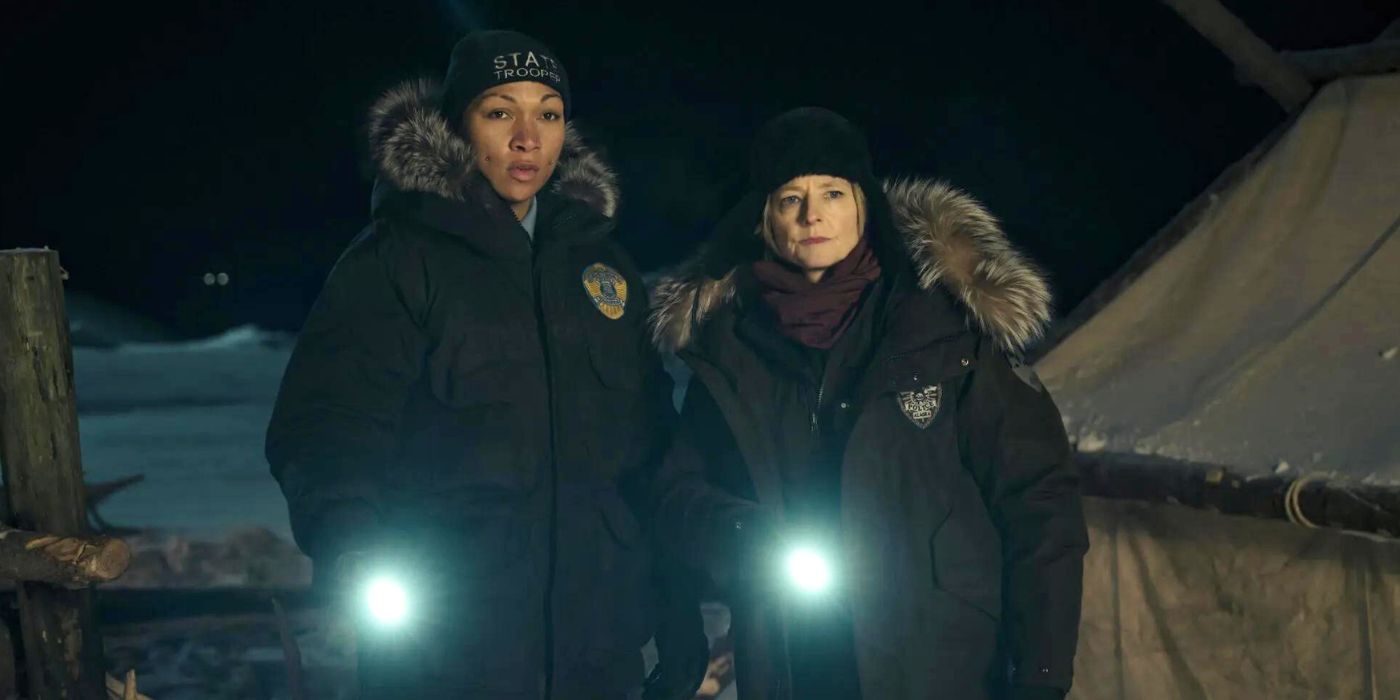Since its debut on January 12, 2014, True Detective has captivated audiences with its dark, atmospheric storytelling, complex characters, and intricate mysteries. The HBO anthology series, initially created by Nic Pizzolatto and later helmed by Issa López for its fourth season, has aired four seasons as of 2025, with a fifth in development. Each season features a new cast, setting, and mystery, ranging from the swamps of Louisiana to the icy expanses of Alaska. A question that has lingered since the show’s premiere is whether these gripping narratives are rooted in real-life events. While True Detective is a work of fiction, its creators have drawn inspiration from real-world crimes and mysteries, weaving them into the fabric of each season to varying degrees. This article explores the extent to which each season of True Detective is based on true stories, examining the inspirations behind the plots and the creative liberties taken by the showrunners.
Season 1: A Chilling Echo of Real-Life Horror
The first season of True Detective, which aired in 2014, is often hailed as the series’ strongest, thanks to its philosophical depth and the riveting performances of Matthew McConaughey as Rust Cohle and Woody Harrelson as Marty Hart. Set in Louisiana, the season follows the detectives as they investigate the ritualistic murder of Dora Lange in 1995, uncovering a sinister cult tied to powerful figures, including the Tuttle family. The narrative spans 17 years, jumping between 1995, 2002, and 2012, as the detectives confront their past and the haunting case that defined their careers.
While the story is fictional, creator Nic Pizzolatto drew significant inspiration from real-life events, particularly the Hosanna Church scandal in Ponchatoula, Louisiana, which unfolded in the early 2000s. This disturbing case involved allegations of child sexual abuse and ritualistic killings within a church setting, implicating individuals in positions of power. In True Detective, the Tuttle cult’s activities—ritualistic assaults and murders of women and children, as seen in a chilling videotape of a girl named Marie—mirror the horrific nature of the Hosanna Church case. The show’s depiction of a powerful family covering up heinous crimes also echoes real-world concerns about systemic corruption and abuse, such as the Jeff Davis 8 case in Louisiana, where eight women were murdered between 2005 and 2009, with some speculating involvement by local authorities. Despite these parallels, Pizzolatto has denied direct inspiration from the Jeff Davis 8, though fans on platforms like Reddit have noted striking similarities in the settings and themes of cover-ups by those in power.
Additionally, the season’s supernatural undertones, including references to the Yellow King and Carcosa, draw from Robert W. Chambers’ 1895 short story collection The King in Yellow, adding a layer of literary influence to the narrative. While these elements are fictional, they enhance the eerie atmosphere that makes the real-life inspirations feel even more haunting. Season 1’s blend of grounded crime and metaphysical horror creates a narrative that feels plausible, even if the specific events are invented.
Season 2: Corruption and a Fictionalized Vernon
The second season of True Detective, aired in 2015, shifts to the fictional city of Vinci, California, and follows a new set of detectives—Ray Velcoro (Colin Farrell), Ani Bezzerides (Rachel McAdams), and Paul Woodrugh (Taylor Kitsch)—as they investigate the murder of a city official amidst a web of corruption and betrayal. Unlike the first season’s critical acclaim, Season 2 received mixed reviews, with many fans feeling it lacked the atmospheric depth and coherence of its predecessor.
While Season 2 is not directly based on a true story, it draws inspiration from real-world events, particularly the history of Vernon, California, a small industrial city near Los Angeles. Vernon, founded in 1905, has a notorious past marked by corruption and control by its founding families, much like Vinci in the show. The season’s plot involves corrupt officials and shady dealings, reflecting Vernon’s history as a “vice haven” in the early 1900s that later transitioned to an industrial hub, often at the expense of its residents. A specific parallel can be drawn to the 2012 death of Vernon city administrator Eric Fresch, which was ruled an accident but occurred amidst allegations of municipal corruption—a theme mirrored in the show’s storyline about the death of a city official named Ben Caspere.
Some fans on Reddit speculated that Season 2 might have been inspired by the Black Dahlia murder, a famous 1947 Hollywood case, but this connection is tenuous at best, as the season’s plot focuses more on systemic corruption than a single sensational murder. Pizzolatto has not confirmed any direct true-crime inspiration for this season, and the narrative leans heavily on fictional elements, such as the convoluted land deals and criminal enterprises that drive the story. While Vernon’s history provides a backdrop, Season 2 is largely a work of imagination, using real-world issues like corruption and industrial decay to ground its fictional tale.
Season 3: Echoes of Real Cases in the Ozarks
Aired in 2019, the third season of True Detective returns to a more atmospheric tone, set in the Ozarks of Arkansas. It follows Detective Wayne Hays (Mahershala Ali) and his partner Roland West (Stephen Dorff) as they investigate the 1980 disappearance of two children, Will and Julie Purcell, across three timelines: 1980, 1990, and 2015. The season explores themes of memory, trauma, and systemic failure, with a narrative structure reminiscent of Season 1.
While Season 3 is not directly based on a true story, it draws parallels with several real-life cases. One notable influence is the West Memphis Three case, which sparked the Satanic panic of the 1980s. In this case, three teenagers were wrongfully convicted of murdering three boys in Arkansas, with accusations of ritualistic killings that echo the straw dolls and occult undertones in True Detective Season 3. The show also references the 1989 murder of 11-year-old Jacob Wetterling and the 1987 deaths of teenagers Kevin Ives and Don Henry, both of which involved mysterious circumstances and potential cover-ups by local authorities.
A significant connection to Season 1 emerges in Episode 7, when a journalist shows Hays a newspaper article about Rust Cohle and Marty Hart’s 2012 takedown of Errol Childress, confirming that the seasons exist in the same universe. This link suggests that the Tuttle family’s influence might extend to the Purcell case, though no direct evidence ties the two beyond thematic similarities like powerful families and ritualistic crimes. While these real-life cases provide a backdrop, the Purcell mystery is a fictional construct, with Pizzolatto focusing more on character development and the emotional toll of the investigation than on replicating a specific crime.

Season 4: Mysteries Inspired by Historical Enigmas
True Detective: Night Country, the fourth season, aired in 2024 under the direction of Issa López, marks a departure from Pizzolatto’s vision while maintaining the series’ dark tone. Set in the fictional town of Ennis, Alaska, the season stars Jodie Foster as Detective Liz Danvers and Kali Reis as Evangeline Navarro, who investigate the disappearance of eight scientists from the Tsalal Arctic Research Station, only to find them frozen in a “corpsicle” in the wilderness. The season weaves in supernatural elements and themes of indigenous culture, connecting back to Season 1 through references to Rust Cohle’s father, Travis, who appears as a ghost.
López has confirmed that Night Country is inspired by two real-life mysteries, though the central plot is fictional. The first is the 1872 disappearance of the crew of the Mary Celeste, a ship found adrift near the Azores Islands with no trace of its passengers, sparking theories ranging from piracy to sea monsters. The second is the 1959 Dyatlov Pass incident, where nine Soviet hikers died under mysterious circumstances in the Ural Mountains, some with missing eyes and tongues, mirroring the gruesome state of the Tsalal scientists in the show. López told Vanity Fair that she was haunted by these stories as a child, particularly the “strange, incomplete answer” of the Dyatlov Pass case, which she preferred over definitive explanations like an avalanche.
While these historical events provide a foundation, the season’s narrative— involving a Native woman’s murder tied to the mining industry and supernatural elements like a ghostly polar bear—is entirely fictional. López also drew inspiration from pop culture, citing films like The Thing and The Shining, blending real-world mysteries with cinematic influences to create a haunting, original story.
Season 5: A Future Grounded in Fiction
As of April 23, 2025, True Detective Season 5 is in development, with Issa López returning as showrunner. Filming is set to begin this year, with a scheduled air date in 2027. While little is known about the plot, López’s approach in Season 4 suggests that it may again draw on real-life inspirations while crafting a fictional narrative. Given the series’ history, it’s likely that Season 5 will continue to explore themes of crime, corruption, and existential dread, possibly incorporating real-world events or mysteries as a backdrop.
Conclusion: A Blend of Reality and Fiction
True Detective is not directly based on true stories, but each season draws inspiration from real-life events and crimes to varying degrees. Season 1’s connection to the Hosanna Church scandal grounds its ritualistic horror in a chilling reality, while Season 2 uses Vernon’s history of corruption as a loose framework for its tale of industrial decay. Season 3 echoes cases like the West Memphis Three, weaving real-world parallels into its fictional Ozarks mystery, and Season 4 pulls from historical enigmas like the Mary Celeste and Dyatlov Pass incidents to craft a haunting Alaskan narrative. The upcoming Season 5 will likely continue this tradition, blending reality with fiction to create compelling, atmospheric mysteries.
What makes True Detective so gripping is its ability to take these real-world inspirations and transform them into stories that feel both plausible and otherworldly. By grounding its narratives in the darkness of human nature—whether through corruption, abuse, or unexplained phenomena—the series resonates with viewers, even as it takes creative liberties. As the show continues to evolve, its blend of fact and fiction ensures that it remains a haunting reflection of the world we live in, where truth is often as elusive as the mysteries it portrays.
